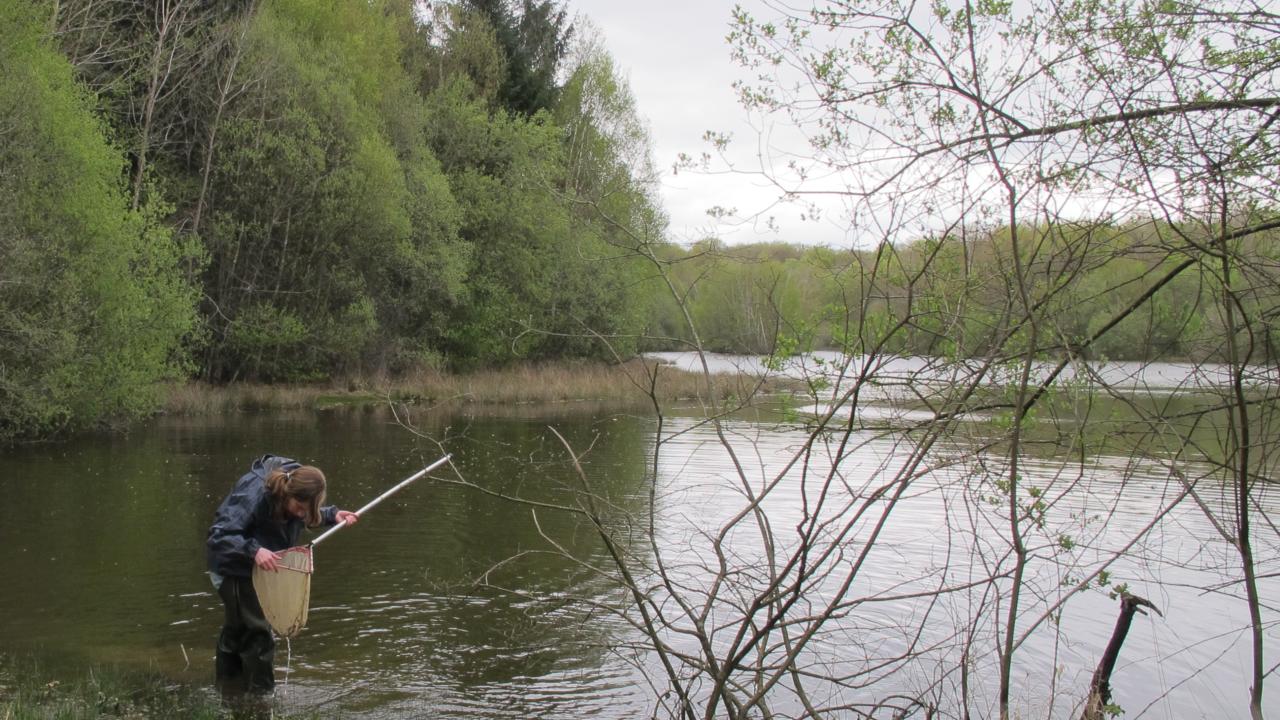
I use genomic data to study the effect of gene flow between species which meet and mate in hybrid zones. The patterns of gene flow we observe in nature can give us information about which regions of the genome restrict gene flow, and which regions are exchanged easily between species. This allows us to find the drivers of genetic diversification during speciation. My research focusses on amphibians and reptiles.
Sleutelwoorden
Biogeography, evolution, genomics, hybrid zone, phylogeny, speciation
Researchinterest
I study populations on the genomic level to understand the species’ dynamics, and what drives their genetic diversification.
Amphibian and reptile populations are in decline worldwide. However, much of their genetic diversity remains unknown. Cryptic species (which look the same, but are genetically different) are regularly discovered. Amphibian and reptile genomes are complex, and assembled genomes are few. To overcome this limitation I employ genome reduction methods, such as transcriptome sequencing and restriction site-associated DNA (RAD) sequencing. To study the processes involved in the speciation, I use taxonomic, phylogenetic, population biology, and ecology approaches.

Currenttopics
A selection of the topics I am working on currently.
- RAD sequencing project on the Bufo hybrid zone in France, in collaboration with the Shaffer laboratory at the University of California in Los Angeles (visit website).
- Introduced snake species project, in collaboration with Reptile, Amphibian & Fish Conservation Netherlands organisation (visit website).
Keypublications
Van Riemsdijk, I., Butlin, R. K., Wielstra, B. Arntzen, J. W. (2019). Testing an hypothesis of hybrid zone movement for toads in France. Molecular Ecology, 28, 1070-1083. https://doi.org/10.1111/mec.15005
van Riemsdijk, I., van Nieuwenhuize, L., Martínez-Solano, I., Arntzen, J. W., & Wielstra, B. (2017). Molecular data reveal the hybrid nature of an introduced population of banded newts (Ommatotriton) in Spain. Conservation Genetics, 19, 249-254. https://doi.org/10.1007/s10592-017-1004-0
van Riemsdijk, I., Arntzen, J. W., Bogaerts, S., Franzen, M., Litvinchuk, S. N., Olgun, K., & Wielstra, B. (2017). The Near East as a cradle of biodiversity: a phylogeography of banded newts (genus Ommatotriton) reveals extensive inter- and intraspecific genetic differentiation. Molecular Phylogenetics and Evolution, 114, 73–81. https://doi.org/10.1016/j.ympev.2017.05.028
Teachingactivities
PhD & Postdoc Course - Programming for Evolutionary Biologists Freie Universität Berlin, Germany, 2018 Technical assistance (visit website).
MSc Course Integrative Taxonomy Leiden University, the Netherlands, 2016, 2017 Technical assistance, a lecture on own work, and an article discussion.
BSc Course Evolution Biology Leiden University, the Netherlands, 2017 Lecturing on speciation theory and own work.
BSc Course Evolution and Biosystematics Wageningen University, the Netherlands, 2014 Technical assistance on biosystematics, and grading essays.
In themedia
PhDetails is a blog about Biology PhDs' everyday life, where I was covered in March 2019 (visit blogpost).
Ben Wielstra, one of my PhD supervisors regularly covers products of my PhD research in his blog (visit blog).
A mesmerising movie of the development of a salamander larvae by Jan van IJken shows what beautiful creatures they are (watch).